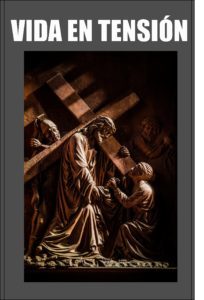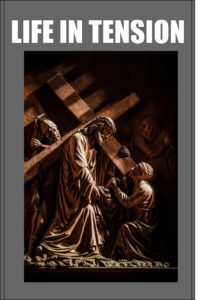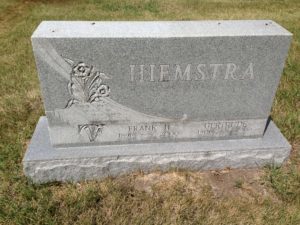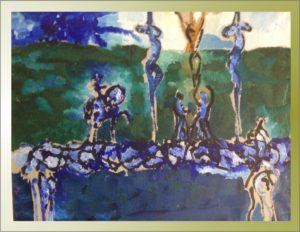Stephen W. Hiemstra's Blog, page 162
April 17, 2020
La Mansedumbre de Dios Habla Volúmenes
 Moisés era un hombre muy humilde,
Moisés era un hombre muy humilde,
más que cualquier otro hombre
sobre la superficie de la tierra.
(Num 12:3)
Por Stephen W. Hiemstra
Debido a que la mansedumbre es más una fruta del espíritu (Gal 5:19-23) que un estado natural, debemos se aprender manso. Si Jesús es manso, entonces ¿eso implica que Dios aprendió ser manso? ¿Qué sugiere el Antiguo Testamento sobre la mansedumbre de Dios?
Los Libros de la Ley
Moisés es descrito como manso. Debido a él tiene una relación especialmente íntima con Dios (Num 12:3) y todos nos sentimos atraídos por personas que comparten nuestras valores, la mansedumbre de Moisés puede inferir que Dios también es manso. Los narrativos sobre Dios como creador, hacedor de pactos, y destructor por medio del diluvio que flota el arca del Noé juntos sugieren que Dios mismo es manso.
Creador
Como creador, Dios se representa como un soberano que emita decretos, tales como: ”Entonces dijo Dios: Sea la luz. Y hubo luz” (Gen 1:3). Cómo se llegó a la luz, no se nos dice; solo se nos dice que Dios decretó que se haga—Dios habla, pero no es hablador. Dios luego declara—“Dios vio que la luz era buena” (Gen 1:4)—Dios no se jacta, él observa mansamente. Mientras su capacidad para crear ilustra el poder de Dios, Dios—“no [está] demasiado impresionado por una sentido de auto-importancia, gentil, humilde, considerado” (BDAG 6132)—como se definió anteriormente. En otras palabras, crear no está “una gran cosa” para nuestro manso Dios.
Hacedor de Pactos
Como hacedor de pactos, Dios es objetivo y reflexivo, no vengativo y autoritario. Por ejemplo, el pacto con Adán está implícito principalmente porque Dios crea Adán y Eva, les da un mandamiento (sean fecundos y multiplíquense), establécelos en una jardín, y déjalos solo una limitación—no comen del árbol del conocimiento del bien y del mal. Cuando Adán y Eva desobedecen el mandamiento de Dios, él no los reemplaza con otra pareja; en cambio, Dios los castiga (los maldice) y los envía fuera de la jardín. Pero antes se fueron, como una madre preparando su hijo por el primero dia de la escuela, “El SEÑOR Dios hizo vestiduras de piel para Adán y su mujer, y los vistió” (Gen 3:21). Si bien Dios estaba perfectamente en su derecho como hacedor de pacto para ser duro con Adán y Eva, de hecho, los trató con cuidado—otra indicación de mansedumbre.
Destructor
Como destructor, Dios envía una diluvia para aniquilar a la humanidad y a todos los seres vivos—casi. El autor de Génesis registra la motivación de Dios como siguienta:
El SEÑOR vio que era mucha la maldad de los hombres en la tierra, y que toda intención de los pensamientos de su corazón era sólo hacer siempre el mal. Y al SEÑOR le pesó haber hecho al hombre en la tierra, y sintió tristeza en su corazón. Entonces el SEÑOR dijo: Borraré de la superficie de la tierra al hombre que he creado, desde el hombre hasta el ganado, los reptiles y las aves del cielo, porque me pesa haberlos hecho. Pero Noé halló gracia ante los ojos del SEÑOR. (Gen. 6:5-8 NBH)
Las palabras clave aquí son: le pesó haber hecho al hombre en la tierra, y sintió tristeza en su corazón; Dios se conmueve por el arrepentimiento y el dolor por el pecado—no por la ira—para enviar el diluvio, que no es la imagen de un Dios colérico que algunos adelantan.
A pesar del diluvio, Dios tiene cuidado de ahorrarle a Noé, su familia, y un par de cada uno de los animales. La arca con Noé, su familia y los animales es un prototipo del remanente de Israel que fueron luego se libró durante el exilio a Babilonia (Isa 54:9). Elegir ejercer solo un subconjunto de su derechos con el remanente—como un padre que ofrecer disciplina, no como un juez que impose unas sanciones legalmente—es un otro ejemplo de un Dios manso.
Estos ejemplos de Dios como creador, como hacedor de pactos, y como destructor nos dan una imagen de un Dios quien no necesita aprender a ser manso porque ya era manso cuando creó los cielos y la tereno.
Los Libros de las Profetas
Las palabras, mansos y humildes, aparecen a través de los Libros de los Profetas donde Guelich (1982, 82) observó que: “poca o ninguna diferencia existe entre el pobre y manso en las Salmos o Isaías” (e.g. Isa 61:1).1 Esta observación tiene mucho sentido porque la Nación de Israel pasó gran parte de ese período como esclavos exiliados en Babilonia y mansedumbre se refieró frecuentemente, como en:
1. Entonces un retoño brotará del tronco de Isaí, Y un vástago dará fruto de sus raíces. Y reposará sobre el el Espíritu del SEÑOR, espíritu de sabiduría y de inteligencia, espíritu de consejo y de poder, espíritu de conocimiento y de temor del SEÑOR. El se deleitará en el temor del SEÑOR, y no juzgará por lo que vean sus ojos, ni sentenciará por lo que oigan sus oídos; Sino que juzgará al pobre con justicia, y fallará con equidad por los afligidos de la tierra. Herirá la tierra con la vara de su boca, y con el soplo de sus labios matará al impío. La justicia será ceñidor de sus lomos, y la fidelidad ceñidor de su cintura. (Isa 11:1-5)
2. Dirige a los humildes en la justicia, y enseña a los humildes su camino. (Ps 25:9)
3. Pero los humildes poseerán la tierra y se deleitarán en abundante prosperidad. (Ps 37:11)
4. ¡Regocíjate sobremanera, hija de Sion! ¡Da voces de júbilo, hija de Jerusalén! Tu rey viene a ti, justo y dotado de salvación, humilde, montado en un asno, en un pollino, hijo de asna. (Zech 9:9)
La aparición de mansedumbre en estos pasajes mesiánicos sugiere que los profetas consideraban mansedumbre como un atributo divino.
Cumplimiento de la Ley y los Profetas
Las mansedumbre que aparece en el Antiguo Testamento es tanto un atributo característico de Dios—parte de su transcendencia—como una especie de solidaridad entre Dios y su pueblo. Elliot (2006, 123) nota que “el Dios de Israel fue emocionalmente estable”;2 la mansedumbre de Dios típica esta estabilidad, que ha llevado a los teólogos a acuñar el término, inmutabilidad, lo que significa el carácter de Dios no cambio (Mal 3:6; Horton 2011, 235). Por lo tanto, cuando Jesús se describe a sí mismo como gentil o manso (Matt 11:29), una audiencia judía podría escuchar con razón estas palabras como una afirmación mesiánica.
Considere lo contrario—¿qué pasa si el carácter de Dios evolucionó y no fue inmutable? ¿Qué pasa si Dios cambió de opinión y no nos lo dijó nada? En un mundo tan cambiante, las promesas de la Biblia podrían también cambiar por cualquier minuto—¿qué parte de la Biblia sigue siendo cierta? ¿Qué pasaría si la expiación de Cristo ya no fuera suficiente? La posibilidad que el carácter de Dios pueda cambiar es desconcertante.
La mansedumbre de Dios es solo un aspecto de su inmutable carácter. La verdad es otro rasgo de carácter estrechamente relacionado (Exod 34:6). El carácter inmutable de Dios implica que solo existe una verdad objetiva. Jesús dijó: “Yo soy el camino, la verdad y la vida; nadie viene al padre sino por mí” (John 14:6). La implicación es que el carácter inmutable de Dios ancla la estabilidad en reinos físicos y espirituales proporcionando credibilidad también a la autoridad de las escrituras.
Oímos la mansedumbre como tipificar el carácter inmutable de Dios que proporciona una base por nuestra fe. Para nosotros, la mansedumbre es un fruto del espíritu, pero, para Dios, es simplemente quién es él.
Notas
1 Guelich (1982, 82) observed that: “there is little or no difference between the poor and the meek in the Psalms or Isaiah” (e.g. Isa 61:1).
2 Elliot (2006, 123) notes that “Israel’s God was emotionally stable.”
Referencias
Bauer, Walter (BDAG). 2000. A Greek-English Lexicon of the New Testament and Other Early Christian Literature. 3rd ed. ed. de Frederick W. Danker. Chicago: University of Chicago Press. .
Elliott, Matthew A. 2006. Faithful Feelings: Rethinking Emotion in the New Testament. Grand Rapids, MI: Kregel.
Guelich, Robert. 1982. The Sermon on the Mount: A Foundation for Understanding. Dallas: Word Publishing.
Horton, Michael. 2011. The Christian Faith: A Systemic Theology for Pilgrims on the Way. Grand Rapids: Zondervan.
La Mansedumbre de Dios Habla Volúmene
Ver también:
Gospel as Divine Template
Otras formas de participar en línea:
Sitio del autor: http://www.StephenWHiemstra.net,
Sitio del editor: http://www.T2Pneuma.com.
Boletín informativo: https://bit.ly/Meet_2020
The post La Mansedumbre de Dios Habla Volúmenes appeared first on T2Pneuma.net.
April 15, 2020
Water Cooler Observations, April 15, 2020
 by Stephen W. Hiemstra
by Stephen W. Hiemstra
On Easter Sunday I broke quarantine for the first time in six weeks to spend time with my parents. For the first time, we participated in online church, ordered pizza, and hosted a family Zoom conference. Because my parents are both eighty-nine, this was a memorable Easter for them and for me.
If you have never hosted a Zoom conference, go to Zoom.com, register, and get started. A free account will allow you to conference with any number of people for up to forty minutes.
Corona Virus Hot Spots
The United States now has the most corona virus cases and deaths. The mortality rate is currently 4.1 percent, lower than most other hot spots.
Corona Virus Hot Spots: Cases, Deaths, and Mortality Rates by Countries, April 14, 2020
Countries
Region
Cases
Deaths
Mortality rate
Share of Cases
United_States_of_America
9
582,594
23,649
4.1%
31.1%
Spain
1
169,496
17,489
10.3%
9.0%
Italy
1
159,516
20,465
12.8%
8.5%
Germany
1
125,098
2,969
2.4%
6.7%
France
1
98,076
14,967
15.3%
5.2%
United_Kingdom
1
88,621
11,329
12.8%
4.7%
China
5
83,303
3,345
4.0%
4.4%
Iran
4
73,303
4,585
6.3%
3.9%
Turkey
4
61,049
1,296
2.1%
3.3%
Belgium
1
30,589
3,903
12.8%
1.6%
Sub-total
1,471,645
103,997
7.1%
78.6%
World
1,873,265
118,854
6.3%
100.0%
Source: European Centre for Disease Prevention and Control
Cabin Fever
Although I continue taking walks with my wife, Maryam, in the evening, my experience of cabin fever has been especially intense this week. Cabin fever is named for the problem pioneers faced being stuck indoors during long winters with little or nothing to do except get sick, suffer freezing weather, and watch the food supply evaporate.
The plot of a 2014 film with Tommy Lee Jones and Hillary Swank, The Homesman, revolved around returning three pioneer wives that went insane during the winter to their families on account of cabin fever in the 1850s. Mary Bee Cuddy, a spinster played by Hillary Swank, was not one of the three, but she ended up so despondent during the journey that she hung herself along the way.
What do you do to cope with cabin fever?
Gethsemane Moment
Where do you turn when you experience pain?
Reading media accounts of responses to corona virus suggests that many Americans do not turn to God in their time of distress. Alcohol sales are skyrocketing, pet adoptions are up, and many people are having meltdowns.
This is a good time to take an afternoon walk in the sunshine and ask God to draw you closer:
Ever-present father,
I praise you for another day and the many people in my life.
Forgive my aloofness and self-absorption.
Thank you for your hedge of protection in the midst of chaos.
Draw me to yourself. Open my heart; enlighten my mind; strengthen my hands in your service that I might rest with you today and everyday.
In Jesus’ precious name, Amen.
Also see:
Water Cooler Observations, April 8, 2020
Water Cooler Observations, April 1, 2020
Water Cooler Observations, March 25, 2020
Corona Virus Versus the Flu
Black Plague
CDC Flu Statistics
Managing Change
Believer’s Prayer
Other ways to engage online:
Author site: http://www.StephenWHiemstra.net
Publisher site: http://www.T2Pneuma.com.
Newsletter: https://bit.ly/Meet_2020
The post Water Cooler Observations, April 15, 2020 appeared first on T2Pneuma.net.
April 14, 2020
Peace: Write a Spiritual Memoir
 Richard Peace. 1998. Spiritual Autobiography: Discovering and Sharing Your Spiritual Story. Colorado Springs: NavPress.
Richard Peace. 1998. Spiritual Autobiography: Discovering and Sharing Your Spiritual Story. Colorado Springs: NavPress.
Review by Stephen W. Hiemstra
One of the rites of passage for seminary students is to write and talk about your walk of faith. The first time it comes up it is intriguing and highly personal. After a while the task becomes more laborious and a bit intrusive. Why do committees keep prodding me about my journey of faith? Richard Peace’s book, Spiritual Autobiography, provides some welcome guidance.
Introduction
Peace cites three things that one can learn in writing a spiritual autobiography:
To examine your life in order to understand the ways that God has been active.
To notice the activity of God in your life and in the lives of those around you.
To share with others what God has been doing in your life (7).
Later, he also observes that writing a spiritual autobiography provides a sense of direction to life (61). Along the way, Peace uses the example of the life of Abraham to illustrate his points. He also draws on the lives of Augustine (Confessions) and C.S. Lewis (Surprised by Joy) at different points in his writing.
As explained in his introduction (How to Use This Guide), Peace organizes his book into three broad sections: “A Small Group Guide”, a description of “How to Prepare a Spiritual Autobiography”, and “Leaders Notes” (7). Peace recommends breaking up a group study into seven sessions: pilgrimage, call and blessing, encounters, relationships, testing, presentation, and celebration. The preparation covers the role of the autobiography, content, process of writing, special issues, and the “spiritual discipline of noticing” (3).
Background
Peace writes on spiritual autobiography following 20 years of teaching a class at Fuller Theological Seminary entitled: “The Pursuit of Wholeness”. As a professor of spiritual formation, Peace is responsible for helping aspiring pastors develop their own spiritual awareness and voice.
It is interesting that Peace occupied the Robert Boyd Munger chair. Munger was also a faculty member but is best known for a sermon: My Heart–Christ’s Home. Munger was also my pastor when my father studied at Berkley University and when I was a toddler.
Writing about Life’s Transitions
For me, the chapter on the content of a spiritual autobiography was an eye-opener. Peace advises the writer to divide one’s life up into periods either by age or by periods reflecting the search for God (65). In turn, divide these periods into sub-periods—eight to twelve altogether (67). Examine these periods for encounters with God, crises of faith, and growth outcomes (71). Then, describe the periods with information that you remember or gather from journals, photos, and letters.
Peace’s explanation of this process is worth the ticket of admission because it is a method for uncovering unresolved issues—the pains of life that form us and, if they are unprocessed, limit our growth intellectually, emotionally, behaviorally, and/or relationally (76-77).
Assessment
Peace’s book, Spiritual Autography, is most helpful in understanding and talking about the faith that you already possess. We paint the world in colors that we draw from the palette of our own experiences. When we can talk about those experiences, we own them; they no longer own us. Pain’s writing is accessible to maturing Christians and small groups should consider using it as a Lenten study.
Peace: Write a Spiritual Memoir
Also see:
Marion Roach Smith Writes Memoir
Books, Films, and Ministry
Other ways to engage online:
Author site: http://www.StephenWHiemstra.net,
Publisher site: http://www.T2Pneuma.com.
Newsletter: https://bit.ly/Meet_2020
The post Peace: Write a Spiritual Memoir appeared first on T2Pneuma.net.
April 13, 2020
Tension and Identity: Monday Monologues (podcast) April 13, 2020
 Stephen W. Hiemstra 2020 (Ken Burtram Photography)
Stephen W. Hiemstra 2020 (Ken Burtram Photography)By Stephen W. Hiemstra
This morning I will share a prayer and reflect on Tension and Identity. After listening, please click here to take a brief listener survey (10 questions).
To listen, click on this link.
Hear the words; Walk the steps; Experience the joy!
Tension and Identity: Monday Monologues (podcast) April 13, 2020
Also see:
Monday Monologue On March 26, 2018
Other ways to engage online:
Author site: http://www.StephenWHiemstra.net,
Publisher site: http://www.T2Pneuma.com.
Newsletter: https://bit.ly/Meet_2020
The post Tension and Identity: Monday Monologues (podcast) April 13, 2020 appeared first on T2Pneuma.net.
April 12, 2020
Mark 16: Easter (4)
 “And he said to them, Do not be alarmed. You seek Jesus of Nazareth, who was crucified.
“And he said to them, Do not be alarmed. You seek Jesus of Nazareth, who was crucified.
He has risen; he is not here. See the place where they laid him” (Mark 16:6 ESV).
By Stephen W. Hiemstra
One of the most vivid memories I have as a young person was the experience of an Easter sunrise. Easter is mysterious, earth-shattering news. How could I sleep through it?
Funeral
At my grandfather’s funeral, I was given a head of wheat which hangs now in my kitchen. The wheat reminds me of Jesus’ saying: “Truly, truly, I say to you, unless a grain of wheat falls into the earth and dies, it remains alone; but if it dies, it bears much fruit” (John 12:24 ESV).
Resurrection Reminders
The mystery of resurrection is everywhere in nature. Sunrise is the resurrection of the day. Springtime is the resurrection of the seasons. The metamorphosis from caterpillar to cocoon to adult butterfly is a beautiful, dramatic resurrection. The Apostle Paul writes: “all of creation groans in anticipation of our redemption” (Romans 8:19-23).
Messianic Prophecies
Prophesies of Jesus’ resurrection start early in scripture. Systematic theologians see salvation history as creation, fall, and redemption. Because sin is the cause of death, eternal life requires forgiveness of sin which is brought about in Christ’s resurrection. This transition is prophesied in Genesis: “I will put enmity between you and the woman, and between your offspring and her offspring; he shall bruise your head, and you shall bruise his heel” (Gen 3:15 ESV).
Other theologians see resurrection arising out of righteous suffering. The prophet Job writes not only of Christ, but his own resurrection: “For I know that my Redeemer lives, and at the last he will stand upon the earth. And after my skin has been thus destroyed, yet in my flesh I shall see God, whom I shall see for myself, and my eyes shall behold, and not another” (Job 19:25-27 ESV). At the birth of the church on Pentecost (Acts 2:27), the Apostle Peter sees resurrection prophesied by King David: “For you will not abandon my soul to Sheol, or let your holy one see corruption” (Psalm 16:10).
When asked to produce a sign Jesus himself spoke of the sign of Jonah (Luke 11:29-32). In the belly of the whale Jonah prayed: “I called out to the LORD, out of my distress, and he answered me; out of the belly of Sheol I cried, and you heard my voice” (Jonah 2:2 ESV). And the whale spit him out on dry land, another resurrection story.
Old Testament Resurrections Accounts
Resurrection did not start with Jesus. Some see the story of the binding of Isaac as a resurrection account and a prophecy of the cross (Genesis 22:1-18). The prophet Elisha raises the Shunammite’s son from the dead (2 Kings 4:32-37). In the valley of bones, Ezekiel prophesied about resurrection of the Nation of Israel (Ezekiel 37:3-6). The exodus of the nation of Israel from Egypt and the return of the exiles from Babylon are both resurrection accounts where a dead nation rises to new life.
New Testament Resurrection Accounts
In the gospels, Jesus himself performed several resurrections. He raised Jairus’s daughter from the dead (Mark 5:22-43). He raised the widow’s son (Luke 7:12-17). Most remarkably, after lying four days in the tomb he raised Lazarus from death (John 11:1-45). Like other resurrections, Jesus’ healings and exorcisms brought hope where there was none.
Some scholars believe that John Mark’s gospel recorded Apostle Peter’s testimony while he was in Rome during AD 41-54. Mark later traveled with Paul. Mark’s role was to teach about the life of Jesus. Later, Luke may have assumed this role in Paul’s missionary team.
Mark’s Unusual Ending
Interestingly, Mark did no see the gospel ending with Jesus. Neither did Luke whose gospel was followed by the Book of Acts. Mark’s gospel starts with: “The beginning of the gospel of Jesus Christ, the Son of God” (Mark 1:1 ESV). Scholars believe that Mark’s gospel ends with the woman going out from the tomb to relay the angel’s message: “But go, tell his disciples and Peter that he is going before you to Galilee” (Mark 16:7 ESV). Likewise, our part in salvation history is to pass on the story. As the hymnist Katherine Hankey (1834-1911) writes: “I love to tell the story, of unseen things above, of Jesus and his glory, of Jesus and his love…” [2]
Christian Hope
Christian hope starts with the resurrection: we know that death is not the end of life’s story. And because we know the rest of the story, we can invest in life and live each day with boldness and joy
Footnotes
Did Abraham believe God would raise Isaac from the dead? Why did the angel have to tell Abraham twice?
[2] www.hymnsite.com/lyrics/umh156.sht
Mark 16: Easter (4)
Also see:
A Roadmap of Simple Faith
Christian Spirituality
Looking Back
A Place for Authoritative Prayer
Other ways to engage online:
Author site: http://www.StephenWHiemstra.net,
Publisher site: http://www.T2Pneuma.com.
Newsletter: https://bit.ly/Meet_2020
The post Mark 16: Easter (4) appeared first on T2Pneuma.net.
Prayer for Grace
 By Stephen W. Hiemstra
By Stephen W. Hiemstra
Gracious Lord,
Help us to rest in you—to bear the burdens that you bore, to exhibit the grace that you exhibited, and to extend the peace that you extended.
Clear our cluttered minds and still our restless hearts so that we refuse to point the finger, refuse to be victims, and resolve to roll up our sleeves to help those around us and love our enemies.
Heal us of our anxieties and restore us to the person that you created us to be.
Through the power of your Holy Spirit and in Jesus’ precious name, Amen.
Prayer for Grace
Also see:
Believer’s Prayer
Other ways to engage online:
Author site: http://www.StephenWHiemstra.net
Publisher site: http://www.T2Pneuma.com.
Newsletter: https://bit.ly/Meet_2020
The post Prayer for Grace appeared first on T2Pneuma.net.
Oración de Gracias
 Por Stephen W. Hiemstra
Por Stephen W. Hiemstra
Gracioso Señor,
Ayúdanos a descansar en tÍ—soportar las cargas que soportas, exhibir la gracia que exhibiste y extender la paz que extendiste.
Despeje nuestras mentes abarrotadas y calma nuestros corazones inquietos para que nos neguemos a señalar con el dedo, rechacemos ser víctimas, y resuelvamos remangarnos para ayudar a quienes nos rodean y amar a nuestros enemigos.
Sánanos de nuestras ansiedad y restauranos a la persona que tú nos creaste a ser.
A través del poder de tu Espíritu Santo y en el precioso nombre de Jesús, Amén.
Oración de Gracias
Ver también:
Oración del Creyente
Otras formas de participar en línea:
Sitio del autor: http://www.StephenWHiemstra.net,
Sitio del editor: http://www.T2Pneuma.com.
Boletín informativo: https://bit.ly/Meet_2020
The post Oración de Gracias appeared first on T2Pneuma.net.
April 11, 2020
Mark 15: Holy Saturday (4)
 “And Joseph bought a linen shroud, and taking him down, wrapped him in the linen shroud
and laid him in a tomb that had been cut out of the rock.
“And Joseph bought a linen shroud, and taking him down, wrapped him in the linen shroud
and laid him in a tomb that had been cut out of the rock.
And he rolled a stone against the entrance of the tomb.” (Mark 15:46 ESV)
By Stephen W. Hiemstra
Jesus is buried on the Day of Preparation which ends at sundown when the Jewish Sabbath begins. This detail in Mark’s Gospel is important because burial was forbidden on the Sabbath and executed criminals could not hang overnight (Deut 21:23). The Gospels mention nothing taking place on the Sabbath while Jesus lay in the tomb and the narrative resumes on the following day. In other words, Jesus rested in the tomb over the Sabbath. Holy Saturday was a day of mourning and grief.
A Grieving Holiday
Grief is more than crying. In Jesus’ Beatitudes, Matthew records: “Honored are those who mourn, for they shall be comforted.” (Matt 5:4) Luke records: “Honored are you who weep now, for you shall laugh.” (Luke 6:21) Both accounts of this Beatitude are written in the form of a lament which has two parts. In the first part, one empties the heart of all grief and pain and anxiety in prayer to God; in the second part, having been emptied the heart turns to God in praise. In the lament, when we grieve, we make room in our hearts for God.
The Theology of Lament
The most famous lament in the Bible is cited by the Gospel of Mark as Jesus’ last words: “My god, my god, why have you forsaken me?” (Mark 15:34) These words come from Psalm 22 verse one which turns to God in verse 19: “But You, O LORD, be not far off; O You my help, hasten to my assistance.” At a time when much of scripture was memorized, rabbis would cite the first part of a passage knowing that the audience would fill in the missing part. Knowing this tradition, Jesus could cite the first verse in Psalm 22 knowing that people hearing him would know the Psalm and how it ended.
Jesus gave us a template for dealing with grief the night before during his prayer in Gethsemane. Mark records that Jesus’ prayed three times: “Abba! Father! All things are possible for You; remove this cup from Me; yet not what I will, but what You will.” (Mark 14:36). Jesus is aware that he stands before the cross and does not want to die; still, he yields to God’s will. Each time we face pain and grief we are faced with a decision: do we turn to God or do we turn into our grief? Our identity is crafted from a lifetime of such decisions.
Joseph of Arimathea
The story of Joseph of Arimathea is instructive. Mark records: “Joseph of Arimathea, a respected member of the council, who was also himself looking for the kingdom of God, took courage and went to Pilate and asked for the body of Jesus.” (Mark 15:43) Asking for the body of a man just crucified for sedition took guts. Yet, with no expectation of resurrection, on a day when Jesus’ inner circle was in hiding and in fear, Joseph “took courage” and asked Pilate for the body of Jesus. Then, he buried him in his own grave [4].
Holy Saturday Reveals our Theology
Holy Saturday is a time to reflect on Christ’s crucifixion. Are we among those happy to see Jesus in the tomb or are we looking forward to the kingdom of God like Joseph of Arimathea?
Footnotes
Burial is work, hence forbidden on the Sabbath (e.g. Deut 5:12-15).
Also: Matthew 27:46. The direct citation of an Aramaic expression—“Eli, eli, lama sabachthani?” in both the Mark and Matthew accounts makes it more likely that these are the actual words of Jesus. This is because the most important expressions in the Bible are cited directly rather than translated or, in this case, the actual words are both cited and translated.
Jesus does exactly that in Matthew 21:16 citing Psalm 8:2.
[4] What a picture of substitutionary atonement—Jesus was buried in my grave so that I do not have to be.
Mark 15: Holy Saturday 2
Also see:
A Roadmap of Simple Faith
Christian Spirituality
Looking Back
A Place for Authoritative Prayer
Other ways to engage online:
Author site: http://www.StephenWHiemstra.net,
Publisher site: http://www.T2Pneuma.com.
Newsletter: https://bit.ly/Meet_2020
The post Mark 15: Holy Saturday (4) appeared first on T2Pneuma.net.
April 10, 2020
Mark 15: Good Friday (4)
 The Crucifixion
The Crucifixion“And when the centurion, who stood facing him, saw that in this way he breathed his last, he said,
Truly this man was the Son of God!” (Mark 15:39 ESV)
By Stephen W. Hiemstra
Second Trial
Pontius Pilate gets right to the point: “Are you the King of the Jews?” Jesus answers with two words–σὺ λέγεις—which means: you say (Mark 15:2). The chief priests accuse him of many things. Pilate asks Jesus a second question: “Have you no answer to make?” (Mark 15:4) Jesus does not respond (Isaiah 53:7). Pilate is amazed.
First Trial
The night before, the high priest asked Jesus if he is the Messiah (Christ). Jesus responded using the words God from Exodus 3:14 saying: “I am”. Then, in case anyone misunderstood him, he paraphrased the messianic prophecy in Daniel 7:13: “you will see the Son of Man seated at the right hand of Power, and coming with the clouds of heaven” (Mark 14:62 ESV). The high priest accordingly accused Jesus of blasphemy which is punishable by stoning under Jewish law (Leviticus 24:16). But since Rome reserved the right to decide all cases of capital punishment, the chief priests accused Jesus of the political crime of sedition—treason against Rome. This is why Pilate asked Jesus: “Are you the King of the Jews?” (Mark 15:2)
What Kind of Messiah?
Realizing that Jesus is innocent of the charge of sedition, like a good politician Pilate begins working the crowd. In offering to release a prisoner named Barabbas, who was guilty of both sedition and murder (Mark 15:7), Pilate is effectively asking the crowd what kind of Messiah they prefer. The crowd asked for Barabbas who was known to be a Jewish nationalist—in other words, the crowd prefers a kingly Messiah.
Messiah means anointed one in Hebrew which translates as Christ in Greek. Three types of roles are anointed: prophets, priests, and kings. In his earthly ministry, Jesus embodied the first two roles (prophet and priest), but the crowd wanted a king—someone to drive the Romans out—as we saw earlier in Mark 11:10.
So Pilate gave them what they wanted (Romans 1:24-25), washed his hands of the decision, and sent Jesus to the cross.
Mark 15: Good Friday 2
Also see:
A Roadmap of Simple Faith
Christian Spirituality
Looking Back
A Place for Authoritative Prayer
Other ways to engage online:
Author site: http://www.StephenWHiemstra.net,
Publisher site: http://www.T2Pneuma.com.
Newsletter: https://bit.ly/Meet_2020
The post Mark 15: Good Friday (4) appeared first on T2Pneuma.net.
Resolve Tension into Identity
 But the meek shall inherit the land and
But the meek shall inherit the land and
delight themselves in abundant peace.
(Ps 37:11)
By Stephen W. Hiemstra
One resolution of life’s tensions is that they are absorbed into our identity, defining our self-image, relationships, and expected actions and reactions. A pastoral identity, for example, implies spending time with God, interpreting scripture, praying with others, preaching the Gospel, and offering comfort to everyone; these activities are expected of pastors and are an essential part of pastoral training. Likewise, training in humility makes us meek, part of our identity as disciples of Christ.
Meekness is Unique
The Third Beatitude is unique to Matthew: “Honored are the meek, for they shall inherit the earth.” (Matt 5:5). Meek means to: “…not [be] overly impressed by a sense of one’s self-importance, gentle, humble, considerate” (BDAG 6132). Meek is like applied humility (poor in spirit)—a character trait of being humble (Guelich 1982, 82), suggested by at least three verses in Matthew:
1. Take my yoke upon you, and learn from me, for I am gentle and lowly in heart, and you will find rest for your souls. (Matt 11:29)
2. Say to the daughter of Zion, ‘Behold, your king is coming to you, humble, and mounted on a donkey, on a colt, the foal of a beast of burden. (Matt 21:5)
3. And the high priest stood up and said, Have you no answer to make? What is it that these men testify against you? But Jesus remained silent. (Matt 26:62-63)
In these three events—Jesus’ invitation to discipleship, his humble parade into Jerusalem, and his silence while on trial—Jesus exhibited his meekness. Sedler (2003, 92) observes that “anything Jesus said [at his trial] would have been twisted, turned, and rejected.” Jesus’ meekness is also observed in the writings of the Apostles Peter, James, and Paul (e.g. 1 Pet 3:13–17, Jas 1:21, and 2 Cor 10:1).
Honor and Meekness
In his writing, Neyrey (1998, 181–182) describes honor in meekness in these terms:
It can indeed be understood as grounds for praise for refusing to be a victim…according to the choreography of honor challenges, the ‘meek’ person could be one who makes no honor claims (e.g. Matt 21:5), or, more likely, one who does not give a riposte [response] to challenges and does not respond in anger to insults. In this light, a ‘meek’ person disengages entirely from the typical honor games of the village…failure to seek revenge.
The implication here is that the meek person choses wisely to remain silent, especially when speaking would escalate conflict with another person.
The problem of escalation is referenced in the Sermon on the Mount when Jesus said:
1. Everyone who is angry with his brother will be liable to judgment; whoever insults his brother will be liable to the council; and whoever says, You fool! will be liable to the hell of fire. (Matt 5:22)
2. Let what you say be simply Yes or No; anything more than this comes from evil. (Matt 5:37)
3. Do not resist the one who is evil. But if anyone slaps you on the right cheek, turn to him the other also. And if anyone would sue you and take your tunic, let him have your cloak as well. And if anyone forces you to go one mile, go with him two miles. (Matt 5:39–41)
Meekness as a Strategy
Savage (1996, 57–61) suggests a strategy of not resisting evil, “fogging,” that involves finding something in the criticism to agree with to frustrate the attacker and to avoid becoming defensive, as when Jesus responses when asked about taxes (Matt 22:17–22). More generally, the meek person will refuse to pursue vindication, offer no response when baited to act imprudently, or just make peace. We are to preserve a humble identity by refusing to argue, belittle, or engage in a response to harsh words. In other words, defend your meekness with silence and humility.
Ortberg (2012, 107) illustrates Jesus’ meekness in imaging a pep talk that Jesus might have given the disciples:
Here’s our strategy. We have no money, no clout, no status, no buildings, no soldiers…We will tell them [Jewish and Romans leaders, Zealots, collaborators, Essenes] all that they are on the wrong track…When they hate us—and a lot of them will…we won’t fight back, we won’t run away, and we won’t give in. We will just keep loving them…That’s my strategy.
Meekness is a strategy, not a weakness, that identifies us as Christians, advances the kingdom, and steals the thunder from our adversaries.
References
Bauer, Walter (BDAG). 2000. A Greek-English Lexicon of the New Testament and Other Early Christian Literature. 3rd ed. ed. de Frederick W. Danker. Chicago: University of Chicago Press. .
Guelich, Robert. 1982. The Sermon on the Mount: A Foundation for Understanding. Dallas: Word Publishing.
Neyrey, Jerome H. 1998. Honor and Shame in the Gospel of Matthew. Louisville: Westminster John Knox Press.
Ortberg, John. 2012. Who Is This Man? The Unpredictable Impact of the Inescapable Jesus. Grand Rapids: Zondervan.
Savage, John. 1996. Listening and Caring Skills: A Guide for Groups and Leaders. Nashville: Abingdon Press.
Resolve Tension into Identity
Also see:
Preface to a Life in Tension
Other ways to engage online:
Author site: http://www.StephenWHiemstra.net
Publisher site: http://www.T2Pneuma.com
Newsletter: https://bit.ly/Meet_2020
The post Resolve Tension into Identity appeared first on T2Pneuma.net.



